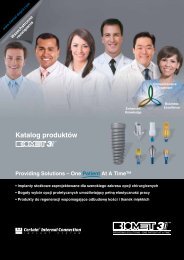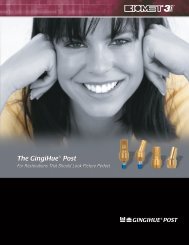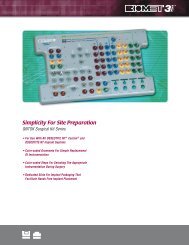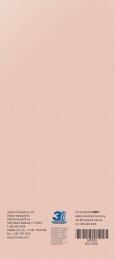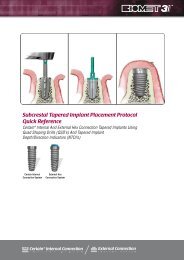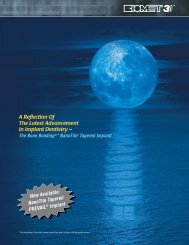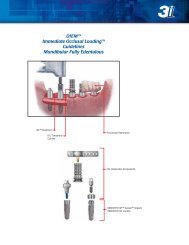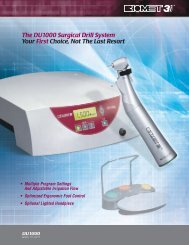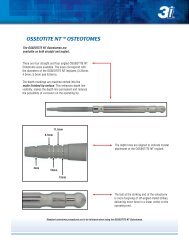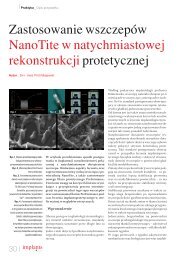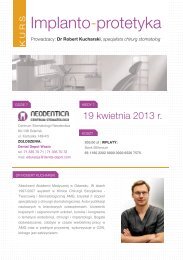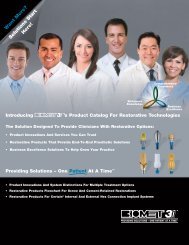SurgiGuide Cookbook - Dental-Depot
SurgiGuide Cookbook - Dental-Depot
SurgiGuide Cookbook - Dental-Depot
You also want an ePaper? Increase the reach of your titles
YUMPU automatically turns print PDFs into web optimized ePapers that Google loves.
CT-scan or Cone beam scan?Complete compatibility with Cone beam and CT scannersSimPlant is fully compatible with all CT scanner types as well as the CB (Cone beam)technology (iCAT, JMorita, Newtom, CB Mercuray, Hitachi, etc.) This compatibility involvesthat the images can be imported into SimPlant (Pro or Master) and that SimPlant files can bemade out of these images with the same full 3D planning possibilities. All functionalities in thesoftware can be used to determine the required information needed to perform a goodplanning. If you trust the 3D scan information, you can trust the visualization in SimPlant.Cone beam scanner and CT-scanner for reliable information on patient’s anatomyDo not trust anything else than a CT or CB scan for a good planning. It’s also the one andonly imaging modality that gives reliable 3D information and information on bone quality andquantity. The extra information you get is certainly worth the scan, especially because there isnot too much tissue taking lots of radiation in the area of interest.The radiation dose is minimalThe effective radiation dose for an average dental CT-scan is 0.3 mSv. This means 3 timesless than for a thoracic spine x-ray and 4 times less than for an abdomen x-ray (which onlyprovides 2D information). To put it another way: taking a dental CT scan incorporates thesame risk as eating a jar of mussels every week for one year. The CB technology is sendingout even less radiation. Even more, most people don’t undergo more than one dental scan ina lifetime, thus limiting the radiation dose.Characteristics of Cone beam scanMore detailed view, but higher influence of metal artifactsAlthough CB is having a lower contrast resolution than regular CT, the spatial resolution ismostly higher, which means that in principle they capture more detail of the patient’s anatomyin the images. Because of the lower contrast resolution, metal artifacts might have a higherinfluence on the quality of the images in CB than in CT.Relative interpretation of density of boneTypical for CB, quantification of the bone quality is not linked to the absolute Hounsfield value,but the relative interpretation of the density in the images gives the information needed toperform a good planning.2. 3D Scan data need to be savedWhen a scan is taken, the scan site saves the scan data on CD or Magneto-Optical Disk(MOD). Consequently this CD or MOD can be sent to Materialise or your processing center toconvert the raw data into a SimPlant file. Materialise cannot accept film prints, so make surethe scan site sends a CD or MOD. They can also send the raw scan data trough the Internet.The scan site can upload your patient data to the Materialise ftp site. (ftp.materialise.com)Using the ftp-website allows faster processing and alleviates the need for a physical mediumto store the data. Materialise will be happy to help the scan site in setting-up a fruitfulcollaboration.Scanning ProtocolAs the 3D scan gives you the information you need for agood planning, it is very important to have it done right.That’s why we created a Scan Protocol that can be used atevery scan site. You find it on page 39.18www.SimPlant.com<strong>SurgiGuide</strong> <strong>Cookbook</strong>



